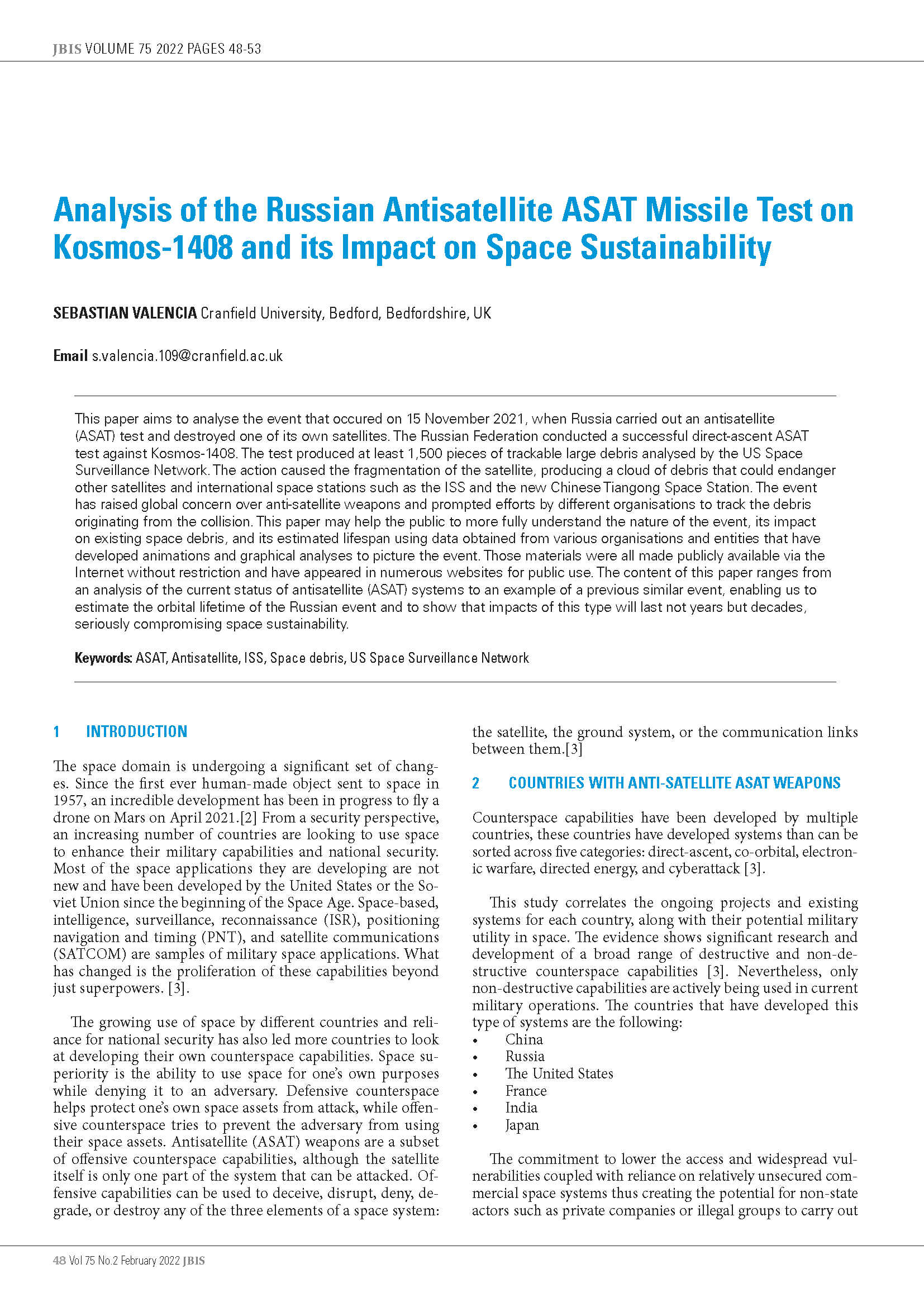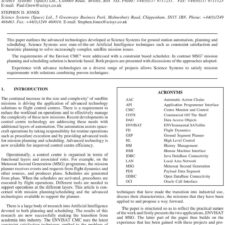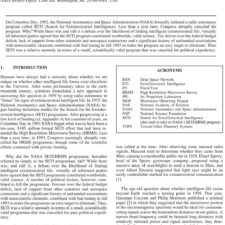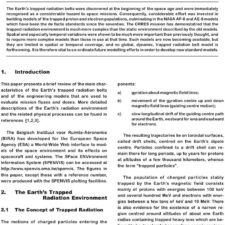Analysis of the Russian Antisatellite ASAT Missile Test on Kosmos-1408 and its Impact on Space Sustainability
£5.00
Sebastian Valencia (2022), JBIS, 75, pp.48-53
Refcode: 2022.75.048
DOI: n/a
Abstract:
This paper aims to analyse the event that occured on 15 November 2021, when Russia carried out an antisatellite (ASAT) test and destroyed one of its own satellites. The Russian Federation conducted a successful direct-ascent ASAT test against Kosmos-1408. The test produced at least 1,500 pieces of trackable large debris analysed by the US Space Surveillance Network. The action caused the fragmentation of the satellite, producing a cloud of debris that could endanger other satellites and international space stations such as the ISS and the new Chinese Tiangong Space Station. The event has raised global concern over anti-satellite weapons and prompted efforts by different organisations to track the debris originating from the collision. This paper may help the public to more fully understand the nature of the event, its impact on existing space debris, and its estimated lifespan using data obtained from various organisations and entities that have developed animations and graphical analyses to picture the event. Those materials were all made publicly available via the Internet without restriction and have appeared in numerous websites for public use. The content of this paper ranges from an analysis of the current status of antisatellite (ASAT) systems to an example of a previous similar event, enabling us to estimate the orbital lifetime of the Russian event and to show that impacts of this type will last not years but decades, seriously compromising space sustainability.
Keywords: ASAT, Antisatellite, ISS, Space debris, US Space Surveillance Network





